Efest LUC V4 Charger 2017
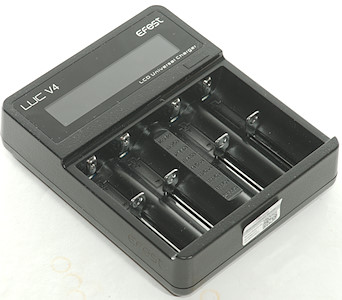

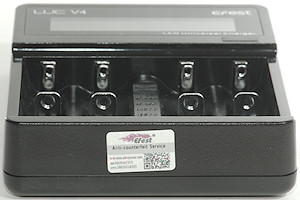
This is a advanced four slot mains powered LiIon charger with 3 different current settings and power bank function.
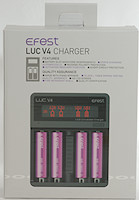

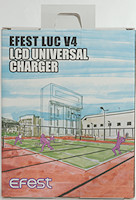

It arrived in a cardboard box with specifications on it.
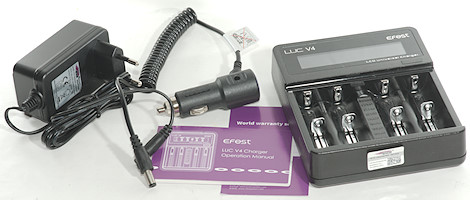
The box included the charger, a power supply, a car adapter, a warranty card and the instruction sheet.
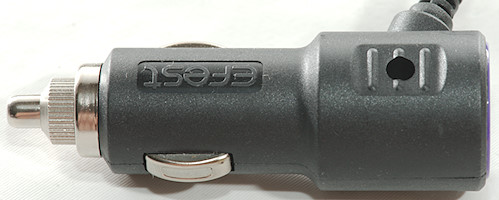
The car adapter is a fairly standard one.
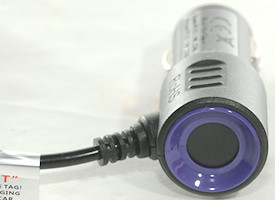
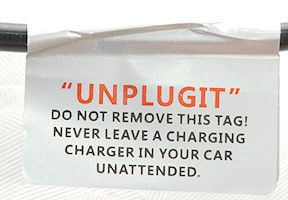
But has Efest colors on it and a nice sensible warning label.
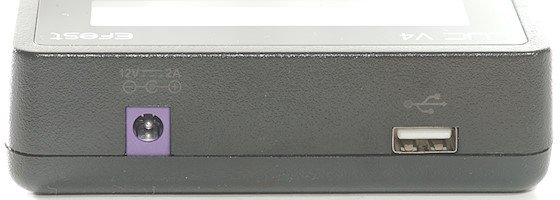
The charger has a 12V power socket and the usb output on the back.
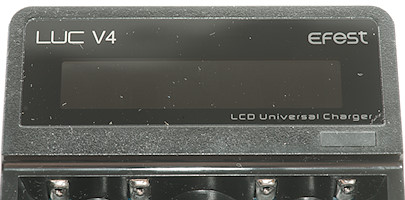
The user interface is a display and one button. When charging it can be used to select current or turn the display off with a long press.
When the charger is unpowered it can also be used to turn on the usb output with a long press.

During power on all the segments are shows: Current selection, Channel 1 & 2, usb output, channel 3 & 4

Here I am charging 3 batteries at 0.5A.
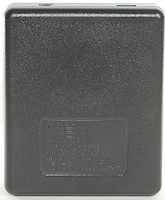
Specifications are on the bottom, but not very easy to read.
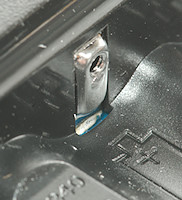
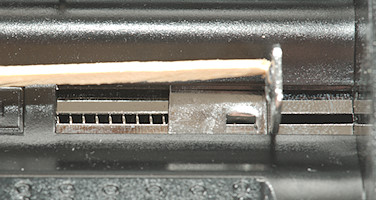
The slots uses the classical slider construction and it works fine.
The slots can work from 30mm to 69mm. This will give trouble with some long protected batteries.


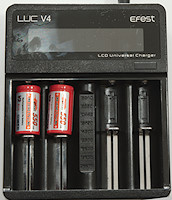


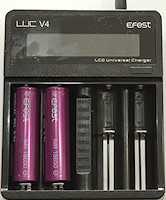
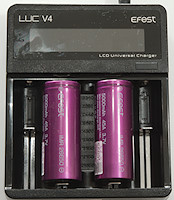
The charger can handle 69 mm long batteries including flat top cells.
Measurements
- When not connected to power it will discharges with about 0.1mA (0.2 on usb slot).
- Below 1V the charger will not detect a battery
- Between 1V and 3V the charger will charge with about 150mA to 50mA
- Above 2V the charger will use regular charging.
- At 2A only the center slots can be used.
- Batteries below 2.5V will not show correct on voltmeter (I often saw 1.64V).
- Above 2.6V the meter is within 0.02 volt.
- Charger will restart when voltage drops slightly.
- It will restart charging on reinsertion of the battery or power cycling.
- Power consumptions when idle without battery is 0.3 watt (0.2 with display off)
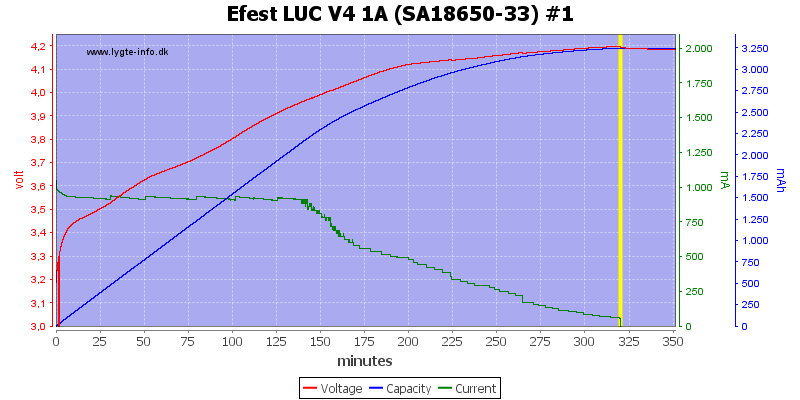
The charger use a CC/CV charge curve with termination at about 60mA, this looks fine.

This battery is more used and charger has problems terminating.
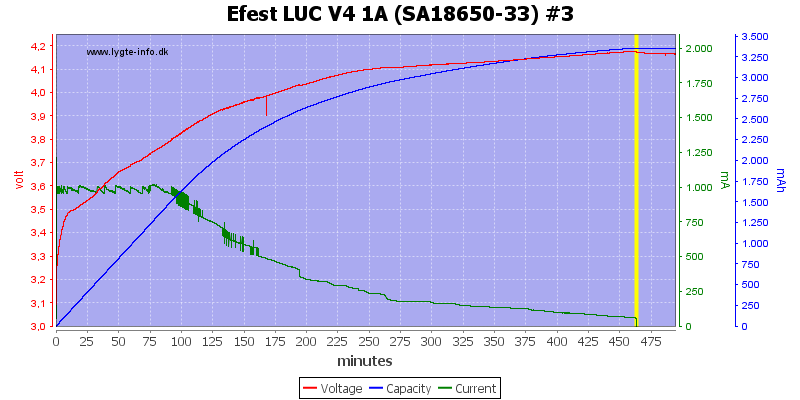
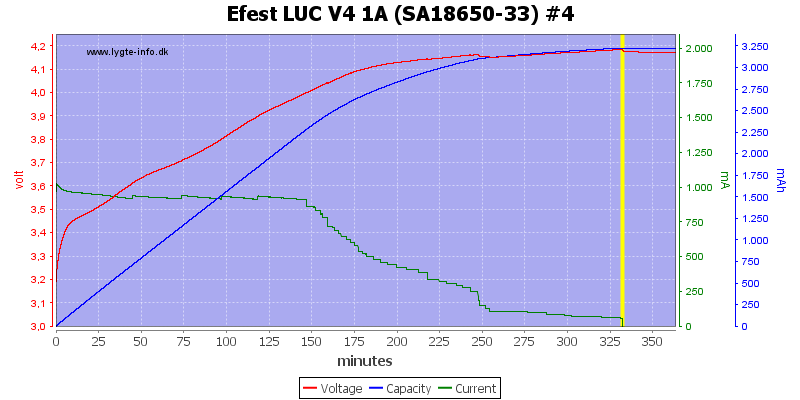
Fine termination on these two cells.
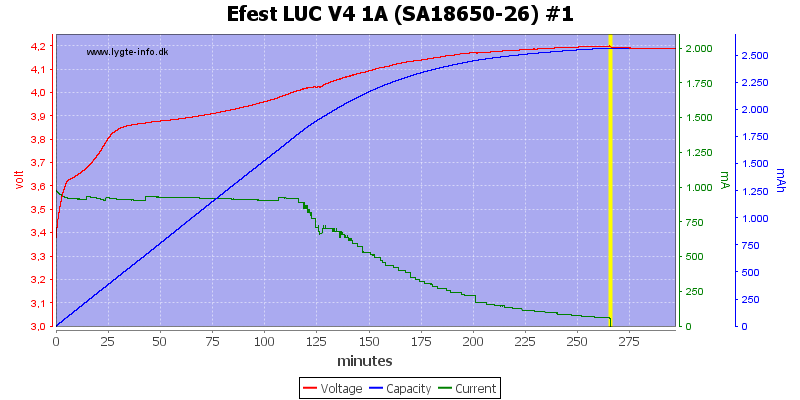
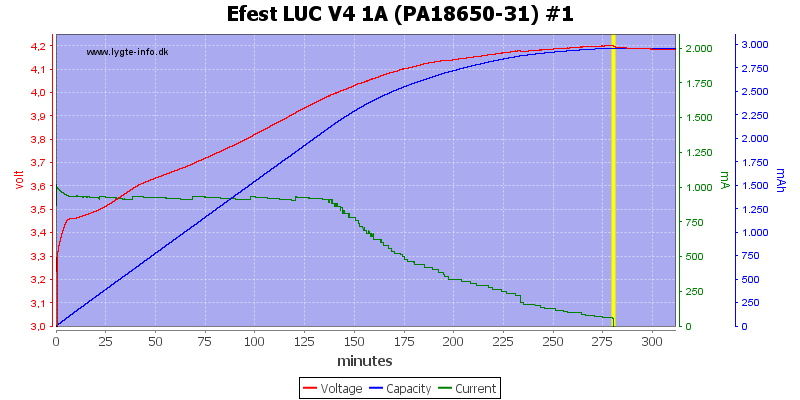
These two cells looks fine.
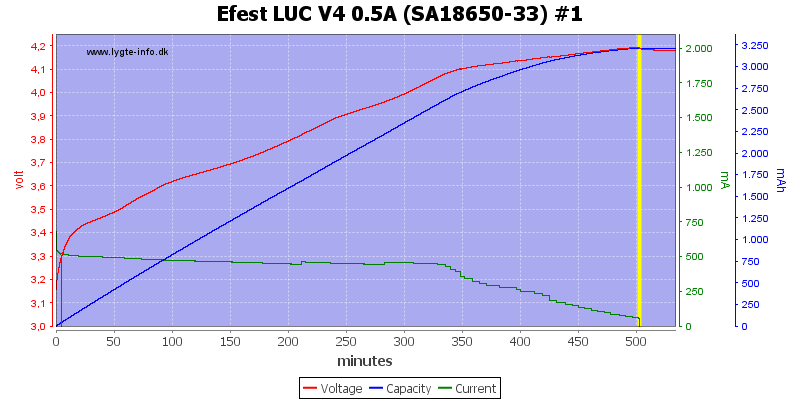
Charging at 0.5A also looks fine.
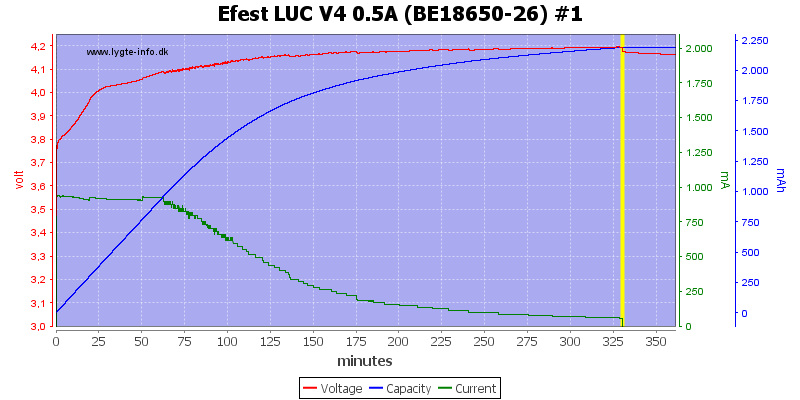
I did this old cell at 0.5A at it charged perfectly.

The smaller cell also charges perfectly.
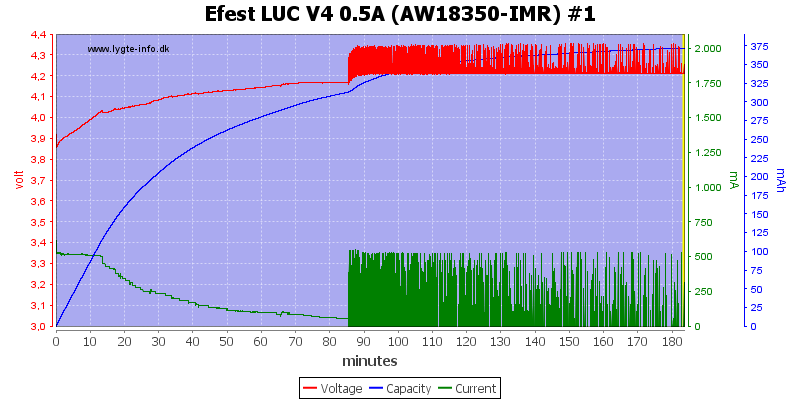
This very old cell is problematic, it looks like the charger has problems adjusting the current low enough.

2A requires good IMR cells to get a perfect termination on this charger, I did not use that here.

The charger can do 4 cells at 1A.
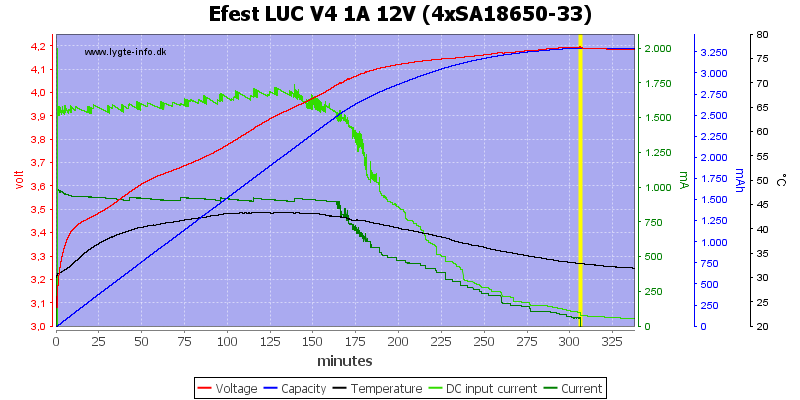
This requires about 1.8A from the power supply.

M1: 42,9°C, M2: 42,8°C, M3: 43,5°C, M4: 44,7°C, M5: 44,9°C, HS1: 60,1°C
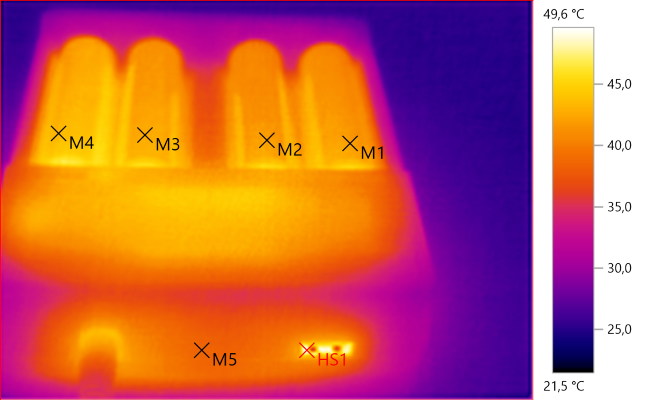
M1: 42,0°C, M2: 42,0°C, M3: 42,7°C, M4: 43,3°C, M5: 38,6°C, HS1: 49,6°C

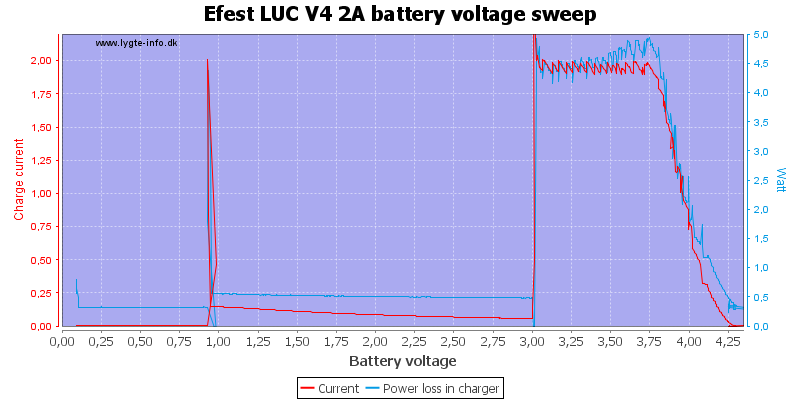
Sweeping the battery voltage from zero to 4.25 shows charge current at the different charge levels.
I did also add a curve to show how much heat is generated in the charger, most of the time the voltage will be between 3.5V and 4V, i.e. a bit above 4 watt.
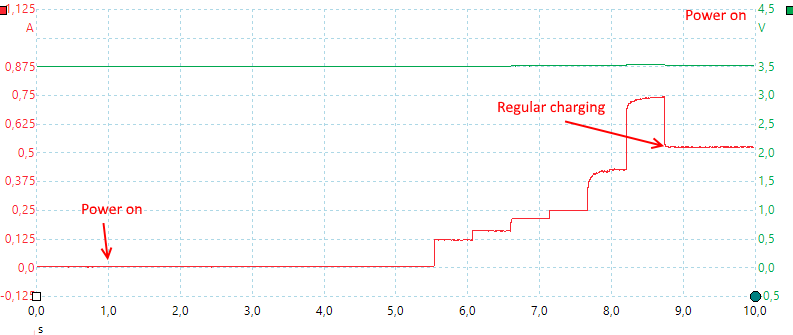
The charger is a bit slow to start with 4.5 seconds. The current regulation works in in steps and takes a few seconds to find the correct charging current.

Charge current can be changed at any time, again the charger needs some time to adjust the current.
USB output
- Output will turn off after 10 seconds when load is below 100mA
- USB output is coded as Apple 1A
- Usb output will turn off when charger is powered.
- Only slot #2 will supply current to usb output
- Will discharge battery with 0.2mA when usb output is off
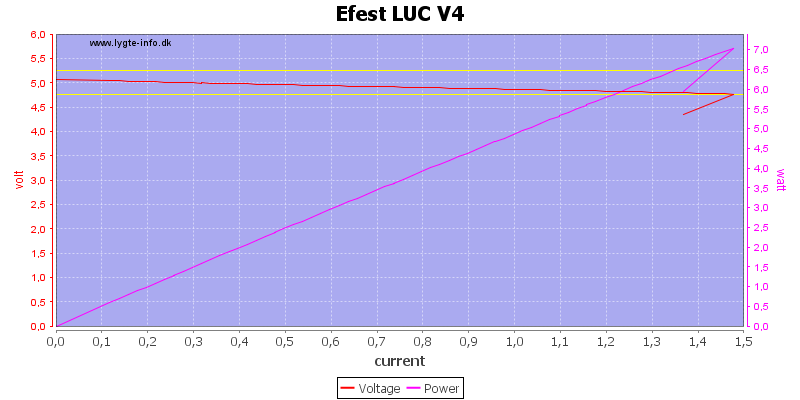
Nearly 1.5A before over protection kicks in, this looks fine.
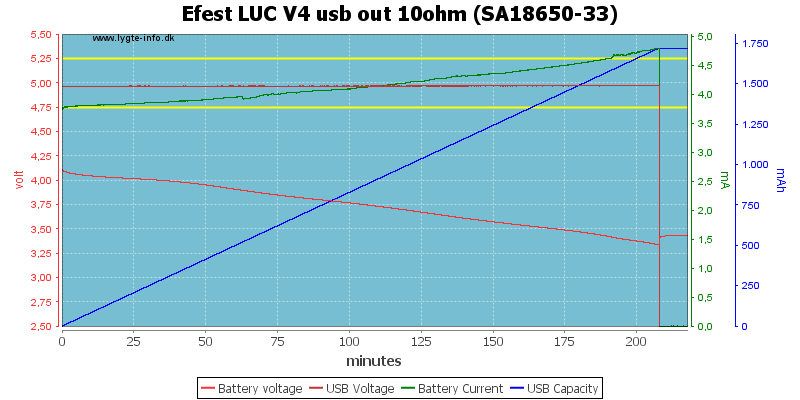
Stable output voltage until the battery is nearly empty and then it turns completely off, this is also fine.
But I would have like it to used a bit power energy from the battery, it turns off at 3.3V, using 3.0 would have given slightly more energy.
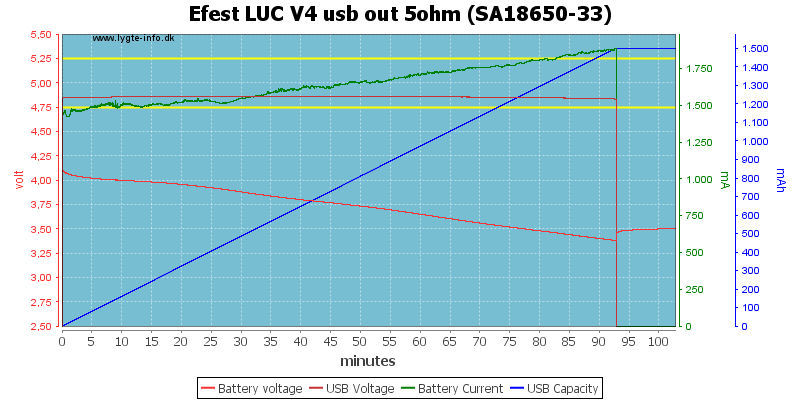
The boost converter is strong enough to maintain output at full 1A current.

At 0.5A the noise is 4mV rms and 51mVpp

At 1A the noise is 9mV rms and 93mVpp, this is very low.
Conclusion
The charger is a fairly good LiIon charger, but it has some problems with termination on older batteries.
Usb output is fairly good, but it uses a old coding and current is a bit low for a smartphone.
Notes
The charger was supplied by Efest for review.
Here is an explanation on how I did the above charge curves: How do I test a charger
















































